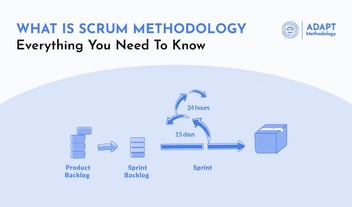Are You Doing Backlog Grooming? Here’s why You Should Do it

What do you do when you notice that you have a lot of items or user stories in your product backlog and some of them are no longer relevant or necessary? Simple. You do some grooming or cleaning up.
The best thing about the Scrum methodology is that it is very adaptive to change. Otherwise, it wouldn’t fit the ‘agile’ work concept. This characteristic makes Scrum a perfect framework for developing various products and processes in as little time as possible and with a high level of efficiency.
In this post, let me explain a very important process that helps your agile team on stay on track with your backlog items – backlog grooming.
Backlog grooming, also called ‘refinement meeting’ or ‘story time session’, is when the Product Owner reviews the items in the product backlog to ensure that all of them are still appropriate and relevant, and all the items listed on top are prioritised and delivered by the end of the sprint. Think of it like cleaning your computer. You’ve got a lot of files and folders, but not all of them are updated or still working. Worse, these unnecessary items are taking a lot of space in your hard drive, making your computer slow and inefficient. So instead of getting things done in no time, you are just wasting time and effort.
By now, you are convinced that backlog grooming is an essential Scrum process. Your questions now might be – how does it take place? Who facilitates and takes part of it? How often should you do it? Are there rules that should be followed during the backlog grooming? How do you do it right?
Backlog Grooming vs. Sprint Planning
To get a clear idea of how backlog grooming works, it is best to distinguish it from sprint planning.
During the sprint planning, your Scrum team agrees on a goal for your next sprint and the Product Owner determines a set of backlog items, ensuring that everyone in the development team understands every user story, epic and task and their expected turnaround time. Planning is the first meeting that the Scrum does in preparation for the sprint. And it’s more than setting requirements. It’s also about learning together, considering options as a team, and making decisions. During the meeting, the Scrum team prioritises backlog items, agree on the delivery time based on the team capacity. The sprint planning is attended by the entire Scrum team.
The backlog items are not fixed. Along the way, as the product development progresses, the Scrum team may realise that some items should be scrubbed off the backlog, resorted, rewritten, or split into smaller items. Unlike the sprint planning, the backlog grooming is not an official Scrum meeting. However, it is deemed as a valuable process that leads to a more productive sprint-planning meeting.
When does backlog grooming takes place? Since the agile team faces time pressure, it is a must that they maximise the value of backlog grooming and minimise the need for lengthy discussions so as not to affect the team’s productivity. As a rule of thumb, about 5 to 10% of the sprint effort should be spent on backlog grooming. And unlike the sprint planning, not everyone in the Scrum team can participate.
The main person involved in backlog grooming is the Product Owner (PO). He does the refinement of user stories and product backlog items together with the Scrum stakeholders or the customers before discussing it to the entire team. During the ‘clean-up’, the following things are done:
- Remove user stories that are no longer relevant to the delivery of the final product increment.
- Re-assess the value of user stories.
- Create new user stories based on newly discovered needs.
- Split bigger stories into smaller, more workable items.
- Redefine acceptance and testing criteria.
- Add new product features as necessary, estimate and prioritise them.
How to Maximise the Value of Backlog Grooming (Best Practices)
Again, backlog grooming should make the Scrum team more focused and efficient, and not less productive. In order to facilitate an effective backlog grooming meeting and maximise its value, below are the best practices that successful Scrum Teams swear by:
Timing is important. There is no defined rule as to when, exactly, should the backlog grooming take place. Some teams do it 2-3 days before the next sprint, others – a week before. When deciding on the schedule, take note that your goal is to update the backlog items before the new sprint begins to lessen the risk of taking the product in the wrong direction. This should be done before your next sprint planning session. However, if it isn’t possible to wait until the end of the current sprint to have some changes in the product feature or functionality, you can have a backlog grooming continuously and incorporate them in one of your daily meetings.
Keep it organised. Since time is of the essence, you want to keep the refinement meeting as short as possible. You can do that by showing up prepared, giving participants a brief beforehand to set their expectations, and encourage everyone to participate. As they leave the meeting, participants need to have a full understanding of the what is left on the backlog items for completion and product delivery. Having a well-organised backlog grooming meeting greatly saves your Scrum team time and valuable resources.
Have the right people. The backlog grooming should be done by the PO, customer point of contact, the stakeholders, and key individual development team members, if needed.
Final Words
There is no denying that backlog grooming is vital to the successful implementation of the Scrum process. It ensures that the backlog items are relevant, up to date, and prioritised. Even if it isn’t considered an official Scrum meeting, it still has to be incorporated in the Scrum events so that the team stays on track and focused on their goal. Remember that the product backlog items are at the core of every sprint. They have to be executed properly so that a completed product of the highest quality is achieved in the end.
[shortcake_call2action title="ORGANISATIONAL MASTERY SCORECARD" description="We have developed a free assessment in the form of a Scorecard to help you establish which areas of business you need to focus on to achieve your particular Organisational Mastery." button_text="Take The Test" button_link="https://www.organisationalmastery.com/scorecard?utm_source=web&utm_medium=Blog - From Luis Goncalves&utm_campaign=grooming backlog" /]
If you liked this article, feel free to visit my company Products and Services pages.
We provide Team Coaching, Agile Training, and Agile Consulting, OKR Training, OKR Consulting, Innovation Training and Innovation Consulting.
With my team, I built 5 main products: High Performing Teams, Scrum Team Coach, Scrum Master Mentoring, Organisational Mastery and the External Business Accelerator.





